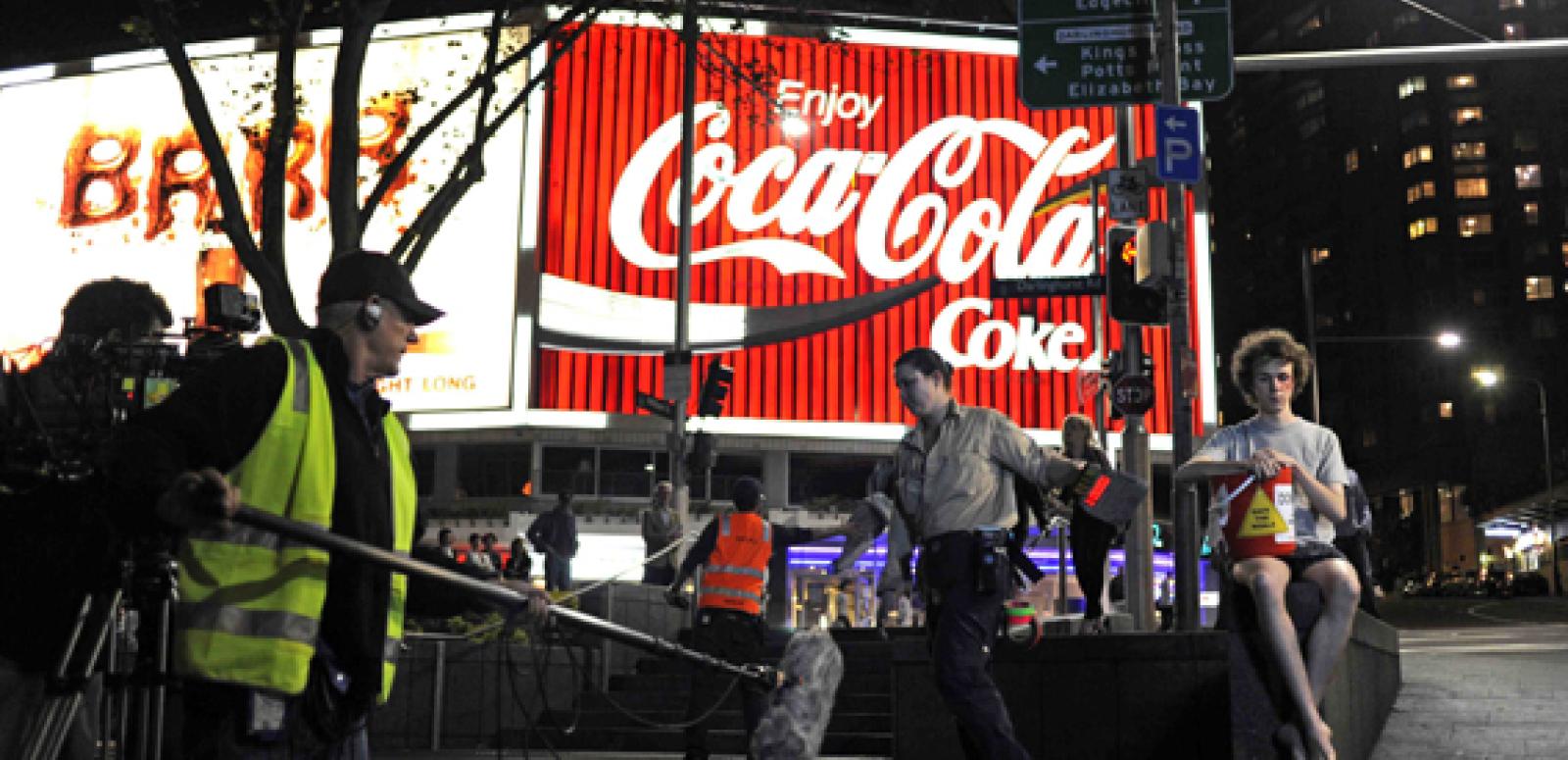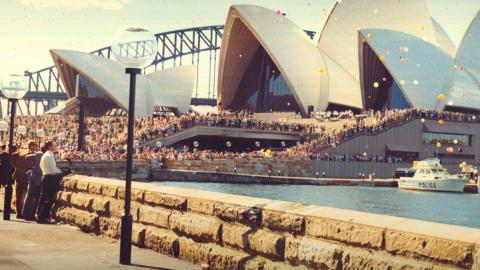

Sydney: City of Film
In offering my congratulations to the Sydney: City of Film management committee for their successful bid, I would also like to reflect for a moment on why Sydney so richly deserves this honour.
Filming of 'Underbelly – The Golden Mile’ in Kings Cross, Sydney. Rowan Witt as the Wilderness Society Koala. Courtesy of Screentime.
To become a UNESCO City of Film, a city needs to have a notable infrastructure related to filming, historic links to the production, distribution and commercialisation of films, have a cinematic legacy in the form of archives, museums, private collections and/or film schools, a tradition of hosting special screening events, be a birthplace or residence for film industry creators and artists, and be depicted as a city in films. I can see numerous connections between these criteria and the NFSA, who itself supported Sydney’s bid with information and advice. As part of the NFSA’s 442,000 holdings of moving image works, we hold the world’s broadest surviving collection of films shot in, depicting and otherwise about Sydney. We will continue to interact with all areas of Sydney’s film community, including filmmakers, distributors, exhibitors, other archives, collectors and film schools. Our special events include screenings for community groups and festivals, presentations on film history and our own activities. And of course we have our own Sydney office, located in Pyrmont close to many filmmakers, other cultural bodies and the city’s television stations.
On 22 November the NFSA and film industry stakeholders gathered at the Australian, Film, Radio and Television School (AFTRS), Moore Park, for the awarding of the 2010 National Film and Sound Archive [p[Ken G Hall Film Preservation Award]] to film producer Patricia Lovell. Within a 15 km radius of AFTRS there is a rich mixture of Sydney’s film history. At the seaside suburb of Manly, Lumiere cameraman Marius Sestier in October 1896 shot Australia’s first film, Passengers leaving the SS Brighton at Manly. Closer to AFTRS there is Fox Studios Australia (Moore Park) and the sites of former studios run by Cinesound Productions (Bondi Junction), Cozens Spencer (Rushcutters Bay) and at Wonderland City (Tamarama), where Raymond Longford directed some of [aso[The Sentimental Bloke]] (1919). The house of pioneer producer-director Franklyn Barrett, used as his production base, still stands as a memorial to his filmmaking life in Randwick. A distinctive house location that Ken G. Hall used in Mr Chedworth Steps Out (1939) and church buildings that Gillian Armstrong used for Oscar and Lucinda (1997) also still exist in Randwick, as does the Randwick Ritz, a rare survivor among the cinemas that used to be a hub of every Sydney suburb. At AFTRS, the NFSA has run industry screenings of new film prints of classic Australian colour feature films that are the output of the Deluxe Kodak Project we have now run for ten years with sponsorship from Deluxe Sydney and Kodak Australasia.
In the Sydney Domain every year there is the awe-inspiring sight of over 100,000 people watching the Tropfest short film competition, with many of its films created within Sydney and its finalists and award-winners being deposited with the NFSA. The australianscreen pages of the NFSA website include playable moving images of Sydney life and culture throughout the span of film history, ensuring we are able to send moving images of Sydney around the world at the click of a mouse. The NFSA has partnered with ABC Online on Sydney Sidetracks, bringing Sydney film history alive and showing the way of one future with location-based technologies. New advances in moving image delivery have always played a role in the screen culture, economics and entertainment that will continue to be crucial to the vision and objectives of Sydney: City of Film.
Ann Landrigan, acting-CEO of the National Film and Sound Archive
The National Film and Sound Archive of Australia acknowledges Australia’s Aboriginal and Torres Strait Islander peoples as the Traditional Custodians of the land on which we work and live and gives respect to their Elders both past and present.


